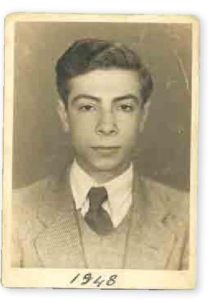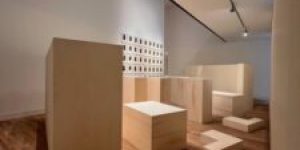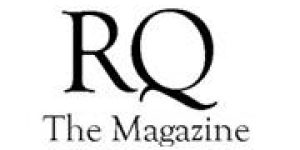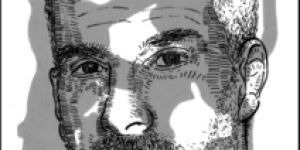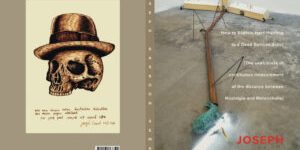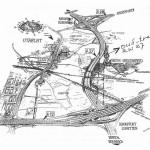Steve Acre – On Fire In Baghdad. An Eyewitness Account Of The Destruction Of An Ancient Jewish Community
No Comments yetFarhud—violent dispossession—an Arabicized Kurdis word that was seared into Iraqi Jewish consciousness on June 1 and 2, 1941. As the Baghdadi Jewish communities burned, a proud Jewish existence that had spanned 2,600 years was abruptly incinerated.
As a nine-year-old, I, Sabih Ezra Akerib, who witnessed the Farhud, certainly had no understanding of the monumental consequences of what I was seeing. Nevertheless, I realized that somehow the incomprehensible made sense. I was born in Iraq, the only home I knew. I was proud to be a Jew, but knew full well that I was different, and this difference was irreconcilable for those around me.
That year, June 1 and 2 fell on Shavuot—the day the Torah was given to our ancestors and the day Bnei Yisrael became a nation. The irony of these two historical events being intertwined is not lost on me.
Shavuot signified a birth while the Farhud symbolized a death—a death of illusion and a death of identity.
The Jews, who had felt so secure, were displaced once again. We had been warned trouble was brewing. Days earlier, my 20-year-old brother, Edmund, who worked for British intelligence in Mosul, had come home to warn my mother, Chafika Akerib, to be careful. Rumors abounded that danger was coming. Shortly after that, the red hamsa (palm print) appeared on our front door—a bloody designation marking our home. But for what purpose?
Shavuot morning was eerily normal.
My father Ezra had died three years earlier, leaving my mother a widow with nine children. I had no father to take me to synagogue; therefore, I stayed home with my mother, who was preparing the Shavuot meal. The rising voices from the outside were at first slow to come through our windows. However, in the blaze of the afternoon sun, they suddenly erupted.
Voices—violent and vile. My mother gathered me, my five sisters and youngest brother into the living room, where we huddled together. Her voice was calming. The minutes passed by excruciatingly slowly. But I was a child, curious and impatient. I took advantage of my mother’s brief absence and ran upstairs, onto the roof.
At the entrance to the open courtyard at the center of our home stood a 15 foot date palm. I would often climb that tree.
When there was not enough food to eat, those dates would sustain us. I expressed gratitude for that tree daily. I now climbed that tree and wrapped myself within its branches, staring down at the scene unfolding below. What I saw defied imagination.
On the narrow dirt road, 400 to 500 Muslims carrying machetes, axes, daggers, and guns had gathered. Their cries—Iktul al Yahud, Slaughter the Jews—rang out as bullets were blasted into the air. The shrieks emanating from Jewish homes were chilling. I hung on, glued to the branches. I could hear my mother’s frantic cries: “Weinak! Weinak!” (Where are you?)
But I could not answer, terrified of calling attention to myself.
The complete story (PDF-format): https://www.mikecohen.ca/files/steve-acre-farhud-article.pdf
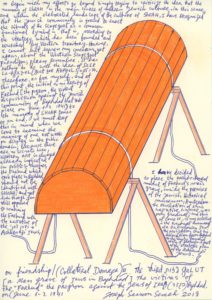
Joseph Sassoon Semah – Working drawing, architectural model mass grave (‘Farhud’, Baghdad, June 1-2 1941). 30 x 21 cm. Paper, blue ink, pencil
You May Also Like
Comments
Leave a Reply
